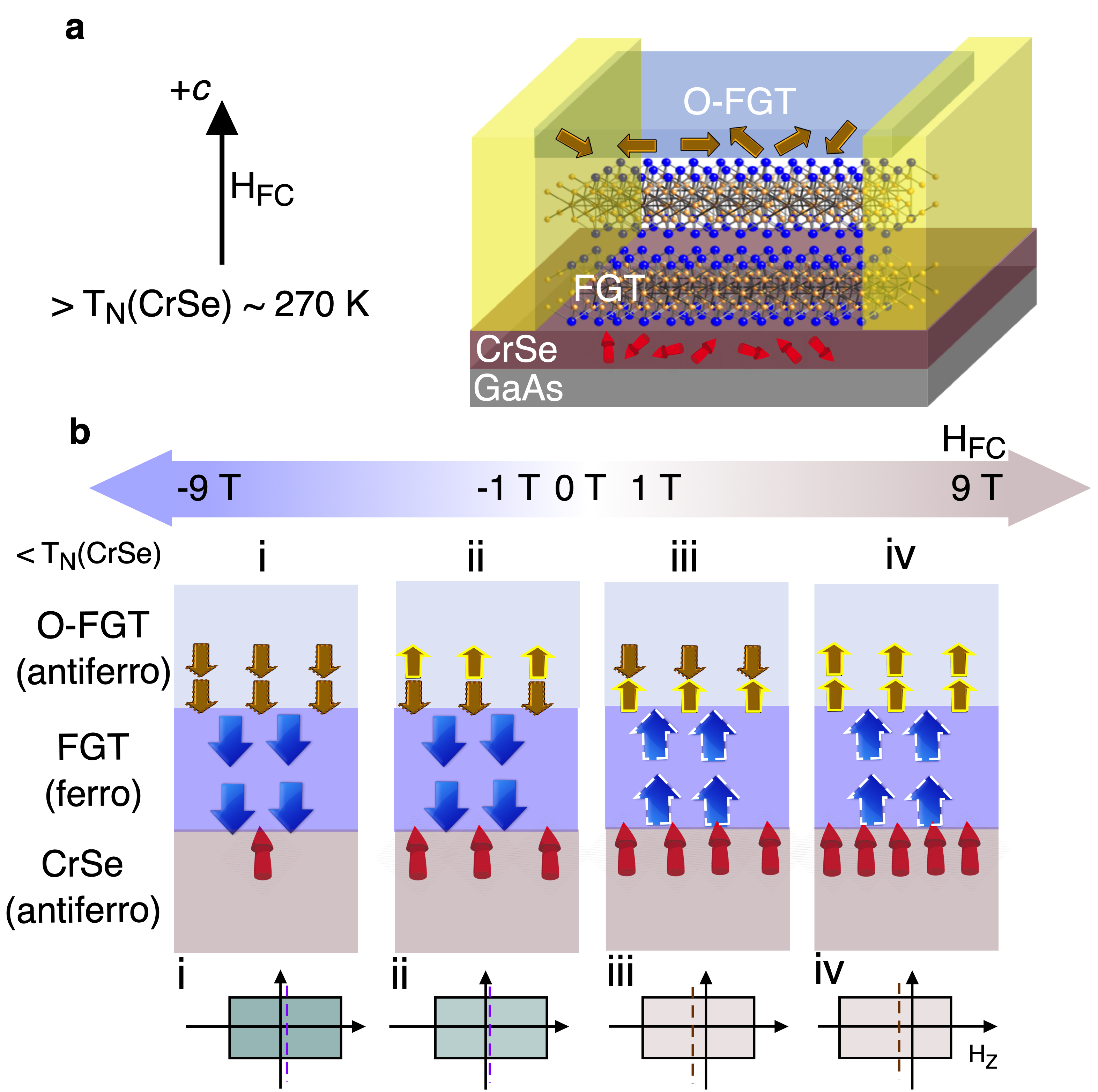Yingying Wu
With a van der Waals ferromagnet (Fe3GeTe2) sandwiched by two antiferromagnets (oxidized Fe3GeTe2 and CrSe), non-antisymmetric dependence of exchange bias on field cooling was observed. This exchange bias is highly tunable by the cooling fields, showing a maximum value of ~90 mT at 5 K. This work opens up new routes towards designing and controlling 2D spintronic devices. For more information, please refer to our paper: Wu, Yingying, et al. “Manipulating Exchange Bias in a van der Waals Ferromagnet.” Advanced Materials (2021): 2105266. Read More

Schematic illustration for the possible mechanism of non-antisymmetric exchange bias. a, Above TN and TC, the ferromagnet and antiferromagnets are in a paramagnetic phase. A magnetic field with a direction perpendicular to the sample plane is shown for field cooling. b, At temperatures lower than the TN, under a negative cooling field i-ii, the uncompensated spins of CrSe experience both a Zeeman energy from external field and an interlayer coupling from CrSe bulk antiferromagnetic layers. This leads to a smaller net magnetization at the CrSe surface. The spin polarizations at the interfacial layer of CrSe and O-FGT are pointing to opposite directions. However, under a large positive cooling field iii-iv, both spin polarizations at the interfacial layer of CrSe and O-FGT are aligned up. Thus a large negative switching field is required to pull the spins in FGT to down directions.